|
Contact the ACC Registration and Housing Center |
Accreditation Information
Educational Need and Goals
Statement of Educational Need/Purpose
Cardiovascular disease (CVD) is the world's leading cause of death, underscoring the priority to develop and deliver education to improve care and outcome for individuals with CVD. ACC.24 is committed to delivering innovative and interactive education that addresses the evolving landscape and needs of evidence-based cardiovascular care across the world. This annual scientific meeting, available both in-person and virtually, will provide access to the latest CVD research and clinical advances on a global scale. It will also promote the exchange of best practices worldwide, fostering practical solutions for the entire cardiovascular care team. Attendees can expect essential education emphasizing cutting edge science, the implementation of evidence-based guidelines, and the promotion of health equity among diverse populations, ensuring improved cardiovascular outcomes.
Overall Goal
ACC.24 participants will incorporate the latest science, clinical evidence-base, and best-practices, to improve prevention, care delivery and outcomes for individuals with — or at risk for — cardiovascular disease.
Overall Learning Objectives
Through our educational content, we aim to:
- Recognize the impact of cutting-edge science on CVD prevention and management.
- Utilize guideline-directed best practices to optimize care for patients with CVD.
- Present cardiovascular science to all members of the cardiovascular team to enhance the delivery of high-quality, patient-centered care.
- Utilize new technologies to improve the delivery of healthcare.
- Employ strategies to reduce inequities in healthcare.
Pathway Learning Objectives
Electrophysiology
The Electrophysiology Pathway will equip learners with comprehensive knowledge and skills related to the diagnosis and management of cardiac arrhythmias and related conditions.
As a result of participating in the Electrophysiology Pathway sessions, learners should be able to:
- Apply recent evidence and current guideline recommendations to the management of all types of cardiac arrhythmias.
- Evaluate emerging evidence and medical and procedural options for prevention, detection, risk assessment, rhythm and rate management, and stroke prevention into the care of patients with atrial fibrillation.
- Identify different patient populations that may benefit from contemporary device-based therapies including physiological pacing.
- Compare and contrast management and treatment of arrhythmias, including outcomes and risk of adverse events due to medications used to treat arrhythmias.
- Recognize and interpret common ECG patterns and integrate this knowledge into clinical decision-making by the practitioner for a cardiovascular disease patient.
- Evaluate up-to-date management of arrhythmias in special populations, including in athletes, older adults, pregnant females, and cancer patients.
- Select arrhythmia management therapies that are at the intersection with structural heart disease, heart failure, and critical care.
Heart Failure and Cardiomyopathies
The Heart Failure and Cardiomyopathies Pathway will equip learners with comprehensive knowledge and skills related to the diagnosis, evaluation, and management of heart failure and cardiomyopathies across a wide spectrum of patients.
As a result of participating in the Heart Failure and Cardiomyopathies Pathway sessions, learners should be able to:
- Formulate a CV care plan using evidence-based therapies and consensus guidelines for diagnosis, evaluation, and management across the entire spectrum of patients with heart failure and cardiomyopathy.
- Analyze the evidence on traditional and contemporary pharmacotherapies, monitoring, and therapeutic devices, towards prioritization and best practices in heart failure management.
- Evaluate special considerations of heart failure care including cardio-oncology, cardiogenic shock, critical care cardiology, cardio-obstetrics, and cardiac amyloidosis and heart failure.
- Identify the current advanced heart failure treatment options including considerations for cardiac transplant and left ventricular assist device.
- Compare and contrast the phenotype of HFrEF, HFmeEF and HFpEF, to determine the appropriate GDMT plan.
- Examine the emerging innovative technologies including machine learning and artificial intelligence to improve the diagnostic and management of heart failure.
Interventional and Structural
The Interventional and Structural Pathway will empower learners with comprehensive knowledge and skills in interventional cardiology and structural heart interventions.
As a result of participating in the Interventional Structural Pathway sessions, learners should be able to:
- Evaluate the evidence from interventional and structural clinical trials describing strategies and outcomes that will impact clinical practice.
- Determine an appropriate antithrombotic regimen for patients undergoing structural and revascularization procedures, particularly in certain clinical scenarios (e.g. acute coronary syndrome; patients with concomitant atrial fibrillation).
- Appropriately incorporate state-of-the-art complex coronary techniques and technologies, including machine learning and artificial intelligence, to improve the diagnostic and therapeutic patient care.
- Describe strategies for preventing and managing interventional complications.
- Incorporate innovative strategies, technologies, and techniques to guide cardiac catheterization lab-based management of patients with angina and non-obstructive coronary artery disease.
- Interpret and integrate invasive coronary and ventricular physiology into clinical decision-making for aortic stenosis.
- Demonstrate cases using innovative technologies in the cardiac catheterization lab.
Ischemic Heart Disease
The Ischemic Heart Disease Pathway will enable learners with the knowledge and skills needed to address the diverse aspects of ischemic heart disease, from diagnosis and risk assessment to advanced treatment options and holistic patient care.
As a result of participating in the Ischemic Heart Disease Pathway sessions, learners should be able to:
- Demonstrate comprehensive, evidence-based care in the evaluation and management of ischemic heart disease.
- Categorize pros and cons of imaging modalities in informing coronary revascularization.
- Differentiate challenging cardiovascular conditions for pre-operative assessment.
- Recognize guidelines for treating left main cases.
- Analyze the geographical variation for management of ischemic heart disease including survival rates for out of hospital cardiac arrest and understand potential solutions in reducing variations in management where appropriate.
- Outline cardiovascular disease in women across their lifespan, from pregnancy through midlife and into older adulthood, including factors unique to women including pregnancy and perimenopausal factors which impact cardiovascular disease.
- Distinguish imaging and risk stratification in patients with multiple co-morbidities and challenging cardiovascular conditions.
- Explain the roles and responsibilities of different specialties in post STEMI (ST elevation myocardial infarction) and cardiogenic shock care. Understand team-based approaches to STEMI care.
- Identify existing and emerging treatment options for patients with refractory angina.
Multimodality Imaging
The Multimodality Imaging Pathway will provide learners a refined proficiency in the application, assessment, and integration of multimodality imaging techniques across various facets of cardiovascular care.
As a result of participating in the Multimodality Imaging Pathway sessions, learners should be able to:
- Apply current guidelines and appropriate use criteria regarding the use of imaging in cardiovascular disease prevention and various disease states.
- Identify current and emerging roles of machine learning and digital technology in cardiovascular imaging, including the current and future roles of artificial intelligence in cardiac imaging.
- Evaluate original research data regarding recent innovations and established techniques in cardiovascular imaging.
- Discuss how to use multimodality cardiovascular imaging in the management of patients with structural heart disease with the multidisciplinary CV care team.
- Recognize the utility of cardiac POCUS in the management of patients with known or suspected cardiovascular disease.
- Explain the roles of multimodality cardiovascular imaging in special populations including patients undergoing cancer treatment, athletes, amyloidosis, pregnancy, and women with chest pain.
- Identify the role of imaging in the team-based management of HCM.
- Discuss sex differences in presentations for ischemic heart disease.
- Review the role of anatomic and functional imaging approaches in the evaluation and management of coronary artery disease.
- Recognize the utility of multimodality cardiovascular imaging in risk prediction in patients with systemic inflammatory disorders.
Pediatric and Congenital Heart Disease
The Pediatric and Congenital Heart Disease Pathway will provide learners with a comprehensive understanding and proficiency in the evaluation and management of congenital heart disease, spanning the entire spectrum of life from childhood to adulthood.
As a result of participating in the Pediatric and Congenital Heart Disease Pathway sessions, learners should be able to:
- Identify practical strategies in the assessment and management of non-ischemic cardiomyopathy in children.
- Recognize pearls and pitfalls in the surgical management of congenital valve disease.
- Classify the assessment and management of AAOCA.
- Identify and recognize appropriate management strategies for women at high risk of maternal cardiac events during pregnancy.
- Explain complex-decision making and percutaneous therapeutic options in congenital valve disease.
- Describe optimal management of anticoagulation in congenital heart disease.
- Recognize the pros and cons of using various imaging techniques to evaluate congenital heart disease.
- Review the benefits, and how to best utilize, non-clinical services to help manage the patient with congenital heart disease.
- Recognize the unique challenges and decision-making required to manage adults with congenital heart disease and end-stage heart failure.
Prevention and Health Promotion
The Prevention and Health Promotion Pathway aims to empower learners with the knowledge and skills to address the multifaceted aspects of cardiovascular health promotion and disease prevention, encompassing the latest evidence, emerging trends, and unique patient populations.
As a result of participating in the Prevention and Health Promotion Pathway sessions, learners should be able to:
- Identify the controversies surrounding dietary interventions for cardiovascular health.
- Examine the latest evidence around new lipid lowering options for the management of patients with statin intolerance.
- Justify appropriate clearance protocols and considerations for returning tactical athletes to work.
- Analyze the latest weight loss pharmacotherapy interventions including the appropriate situations to use and their effectiveness.
- Compare and contrast different metabolic medications such as SGLT2i and GLP1RA and their appropriate uses.
- Identify existing and emerging approaches to lowering lipoprotein (a), including medications and apheresis, as well as the significance of racial and ethnic differences in lipoprotein (a) levels.
- Summarize the available evidence for different therapeutic approaches to managing treatment-resistant hypertension.
- Compare the benefits and pitfalls of utilizing emerging technology such as AI, in cardiovascular dissemination, diagnosis, and education.
- Give examples of unique female-specific risk factors for cardiovascular disease across a woman's lifespan related to hemodynamic changes of pregnancy, risk assessment, and imaging safety.
- Recommend successful programs for improving cardiac rehabilitation, guideline directed therapy, smoking cessation, and combating climate change and pollution.
- Evaluate appropriate hormone therapy regimens for different patient populations such as cis gender and transgender individuals.
- Differentiate the unique challenges in the diagnosis and management of hypertension in special populations such as women, older adults, racial/ethnic minorities, and young adults.
- Recognize high risk cardiac conditions in athletes and appropriate guidance for competitive sports.
- Explain various global and local population health strategies from various successful models with insight on how to implement in clinical practice or health care systems.
Pulmonary Vascular Disease
The Pulmonary Vascular Disease Pathway aims to enhance learners' proficiency in the diagnosis and management of pulmonary vascular diseases, encompassing a multidisciplinary, patient-centered, and technologically advanced approach to care.
As a result of participating in the Pulmonary Vascular Disease Pathway sessions, learners should be able to:
- Apply a multidisciplinary treatment approach in decision making in CTEPH to optimize long-term outcomes.
- Compose a physiology based pulmonary hypertension clinical management plan to guide patient care.
- Compare and contrast the PAH treatment with updated pharmacological management in pulmonary hypertension in complex patient populations, including drug choices, health equity and access to care.
- Practice a skillset in CTEPH treatment, long-term care and expected outcomes in CTEPH patients.
- Describe how to perform a thorough work-up for the diagnosis of pulmonary hypertension.
- Recognize state-of-the-art and emerging technologies for pulmonary hypertension evaluation and treatment response.
- Describe the emerging data on right ventricular failure and how it can be managed in different patient care settings.
Valvular Heart Disease
The Valvular Heart Disease Pathway aims to enhance learners' expertise in the diagnosis and management of valvular heart disease, while promoting collaboration within interdisciplinary teams and aligning practice with the latest guidelines and research findings.
As a result of participating in the Valvular Heart Disease Pathway sessions at ACC.24, learners will have an improved or reinforced ability to:
- Develop a strategic plan for building and collaborating with an interdisciplinary team to manage high-acuity valvular heart disease.
- Apply contemporary management strategies for aortic stenosis.
- Compare and contrast a variety of mature technologies for valve repair and replacement in younger adults.
- Apply current guidelines and recommend best practices for valvular care in clinical practice.
- Give examples of strategies for improving patient education and shared decision-making when managing complex valvular heart disease cases.
- Recall the tricuspid regurgitation etiologic and morphologic classification and associated outcomes.
- Identify prognostic considerations and evaluate treatment options for concomitant mitral and aortic valve disease.
- Construct a management plan for highly symptomatic patients with severe tricuspid valve disease and right-sided heart failure.
- Explain the implications of emerging research for current valvular heart disease management guidelines.
- Assess the effectiveness of current treatment options for patients with functional mitral regurgitation.
- Optimize timing of surgical referral and intervention in patients with chronic aortic regurgitation, including those with concomitant aortic dilation.
- Examine the challenges of caring for patients with infective endocarditis, in collaboration with a multidisciplinary team.
Vascular Medicine
The Vascular Medicine Pathway will enable participants to enhance their knowledge and expertise in vascular medicine, while fostering a deep understanding of disparities, research, and complexities in the field.
As a result of participating in the Vascular Medicine Pathway sessions, learners will have an improved or reinforced ability to:
- Evaluate the effectiveness of different strategies used to address vascular health care disparities.
- Interpret the findings and implications of the latest research in vascular medicine including research that may lead to novel therapeutics for vascular disease.
- Identify the complexities of optimizing medical management of peripheral artery disease.
- Debate the best management for subsegmental pulmonary embolism.
- Distinguish between lymphedema, lipedema, and venous disease as causes of limb swelling.
- Describe the aortic and peripheral vascular disease guidelines.
- Evaluate the roles of the multidisciplinary team in the comprehensive care of peripheral vascular disease.
Credit Designation Statement
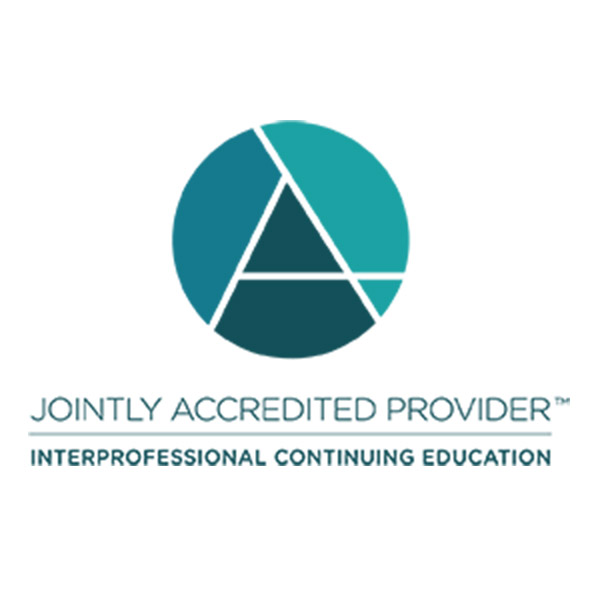
In support of improving patient care, the American College of Cardiology Foundation (ACCF) is jointly accredited by the Accreditation Council for Continuing Medical Education (ACCME), the Accreditation Council for Pharmacy Education (ACPE), and the American Nurses Credentialing Center (ANCC) to provide continuing education for the healthcare team.
Physicians – Live
The ACCF designates this internet enduring material for a maximum of up to 20.25 AMA PRA Category 1 Credits™. Physicians should claim only the credit commensurate with the extent of their participation in the activity.
Physicians – Virtual
The ACCF designates this internet enduring material for a maximum of up to 12.25 AMA PRA Category 1 Credits™. Physicians should claim only the credit commensurate with the extent of their participation in the activity.
ABIM MOC – Live
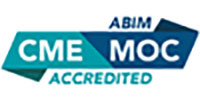
Successful completion of this CME activity, which includes participation in the evaluation component, enables the participant to earn up to 20.25 Medical Knowledge MOC points in the American Board of Internal Medicine's (ABIM) Maintenance of Certification (MOC) program.
Participants will earn MOC points equivalent to the amount of CME credits claimed for the activity. It is the CME activity provider's responsibility to submit participant completion information to ACCME for the purpose of granting ABIM MOC credit.
ABIM MOC – Virtual
Successful completion of this CME activity, which includes participation in the evaluation component, enables the participant to earn up to 12.25 Medical Knowledge MOC points in the American Board of Internal Medicine's (ABIM) Maintenance of Certification (MOC) program.
Participants will earn MOC points equivalent to the amount of CME credits claimed for the activity. It is the CME activity provider's responsibility to submit participant completion information to ACCME for the purpose of granting ABIM MOC credit.
ABP MOC – Live
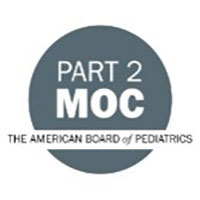
Successful completion of this CME activity, which includes participation in the evaluation component, enables the learner to earn up to 20.25 MOC points in the American Board of Pediatrics' (ABP) Maintenance of Certification (MOC) program. It is the CME activity provider's responsibility to submit learner completion information to ACCME for the purpose of granting ABP MOC credit.
Participants will earn MOC points equivalent to the amount of CME credits claimed for the activity. It is the CME activity provider's responsibility to submit participant completion information to ACCME for the purpose of granting ABIM MOC credit.
ABP MOC – Virtual
Successful completion of this CME activity, which includes participation in the evaluation component, enables the learner to earn up to 12.25 MOC points in the American Board of Pediatrics' (ABP) Maintenance of Certification (MOC) program. It is the CME activity provider's responsibility to submit learner completion information to ACCME for the purpose of granting ABP MOC credit.
Participants will earn MOC points equivalent to the amount of CME credits claimed for the activity. It is the CME activity provider's responsibility to submit participant completion information to ACCME for the purpose of granting ABIM MOC credit.
Nurses – Live
The ACCF designates this educational activity for a maximum of 20.25 continuing nursing education contact hours.
Nurses – Virtual
The ACCF designates this educational activity for a maximum of 12.25 continuing nursing education contact hours.
AAPA Credit Designation Statement – Live
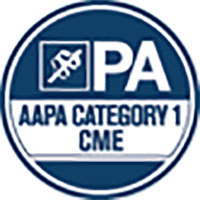
The American College of Cardiology Foundation has been authorized by the American Academy of PAs (AAtoPA) award AAPA Category 1 CME credit for activities planned in accordance with AAPA CME Criteria. This activity is designated for 20.25 AAPA Category 1 CME credits. PAs should only claim credit commensurate with the extent of their participation.
AAPA Credit Designation Statement – Virtual
The American College of Cardiology Foundation has been authorized by the American Academy of PAs (AAPA) to award AAPA Category 1 CME credit for activities planned in accordance with AAPA CME Criteria. This activity is designated for 12.25 AAPA Category 1 CME credits. PAs should only claim credit commensurate with the extent of their participation.
Pharmacists - Live
ACCF designates this continuing education activity for 20.25 contact hours of the Accreditation Council for Pharmacy Education. ACPE Universal Activity Number (UAN): JA4008225-0000-23-012-L01-P & JA4008225-0000-23-012-L01-T
Pharmacists – Virtual
ACCF designates this continuing education activity for 12.25 contact hours of the Accreditation Council for Pharmacy Education. ACPE Universal Activity Number (UAN): JA4008225-0000-23-013-L01-P JA4008225-0000-23-013-L01-T
Interprofessional Continuing Education (ICPE) Credit
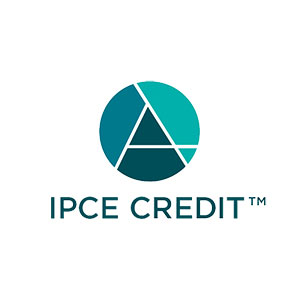
This activity was planned by and for the healthcare team, and learners will receive [20 credits provided by ACCF] Interprofessional Continuing Education (IPCE) credits for learning and change.
American Society of Radiologic Technologists (ASRT)
This activity has been approved by the ASRT for Category A continuing education credit.
To be eligible to claim ASRT CE Credit, you must have participated in the live or live stream sessions on April 6 – 8, 2024 or attended in-person.
Disclosure/Conflict of Interest Statement
As a provider jointly accredited by the Accreditation Council for Continuing Medical Education (ACCME), the Accreditation Council for Pharmacy Education (ACPE), and the American Nurses Credentialing Center (ANCC), the American College of Cardiology Foundation (ACCF) must ensure balance, independence, objectivity, and scientific rigor in all of their directly provided or jointly provided/co-provided educational activities. Planners, presenters, and other contributors, in a position to control the content are required to disclose to the audience all relevant financial relationships he/she and/or his/her spouse or domestic partner may have, occurring within the past 24 months, with any entity producing, marketing, re-selling, or distributing health care goods or services consumed by, or used on, patients. When an unlabeled use of a commercial product or an investigational use not yet approved for any purpose is discussed during an educational activity, the contributor should disclose that the product is not labeled for the use under discussion or that the product is still investigational.
ACCF is committed to providing its learners with high-quality activities and materials that promote improvements and quality in health care and not a specific proprietary business or commercial interest. The intent of this disclosure is not to prevent participation in educational activities by persons with a financial or other relationship, but rather to provide learners with information on which they can make their own determination whether financial interests or relationships may influence the education activity.
ACCF assesses conflicts of interest (COI) with its faculty, planners, managers, staff, and other individuals who are in a position to control the content of certified activities. All relevant potential conflicts of interest that are identified are thoroughly vetted by course directors, ACCF education staff, and members of the Accreditation Compliance Workgroup (ACWG) through a process that includes appropriate peer review for fair balance, scientific objectivity and validity, and patient care and safety recommendations.
ACCF has taken the necessary steps to ensure that all relevant financial relationships have been mitigated.
Please note ACCF staff and the ACWG members involved with this activity have nothing to disclose.

© 2024 American College of Cardiology Foundation. Visit ACC.org
Terms and Conditions • Registered User Agreement • Advertising and Sponsorship Policy • Privacy Policy • Cookie Policy • Contact Us
